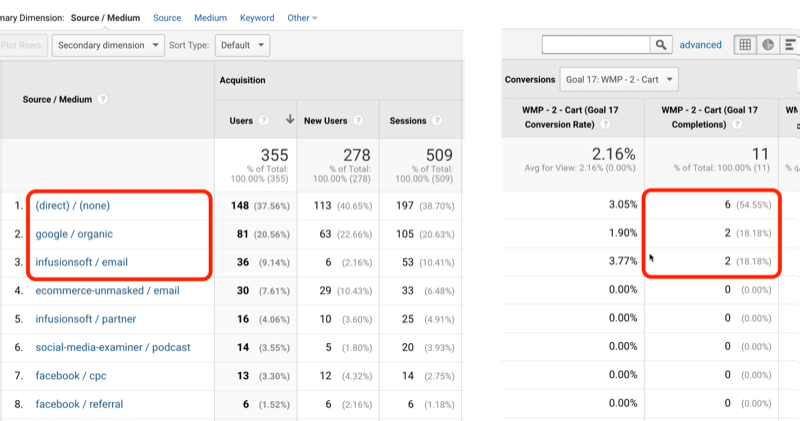What Data Is Google Analytics Goals Unable to Track: Crucial Details
What Data Is Google Analytics Goals Unable to Track: Crucial Details
Blog Article
Revealing the Blind Destinations: Understanding What Google Analytics Goals Can not Determine
In the world of digital analytics, Google Analytics stands as a powerful tool for tracking and assessing on-line individual communications. Nonetheless, amidst its robust capacities, there exist blind spots that usually evade measurement. Understanding what Google Analytics objectives can not determine is essential for obtaining a thorough view of individual actions and interaction. As we explore the intricacies of these dead spots, we discover a complicated web of undiscovered areas that hold valuable understandings right into customer activities and inspirations, challenging standard knowledge and dropping light on the restrictions of our data-driven understanding.
User Behavior on External Platforms
Comprehending just how customers interact on external systems is essential for maximizing on the internet strategies. External systems, such as social networks networks, referral sites, and on the internet forums, play a considerable function in driving web traffic to a business's website. By assessing individual actions on these systems, companies can get useful understandings right into the performance of their marketing efforts and the choices of their target market.
One secret aspect of customer habits on exterior systems is the reference source. By tracking where the individuals are originating from, organizations can recognize which platforms are driving one of the most traffic to their internet site. This information can aid business assign their resources better, concentrating on the systems that yield the most effective outcomes.

Offline Interactions and conversions
Evaluating individual behavior on outside systems provides important understandings right into on the internet strategies; however, considering offline conversions and communications is just as critical for an extensive understanding of a company's total performance. Offline conversions, such as in-store purchases or phone queries, play a considerable role in lots of companies' success.

Attribution Beyond Last Click
When delving into the realm of electronic advertising analytics, it becomes necessary to look past the single touchpoint of the last click for a much more extensive understanding of attribution. While Google Analytics provides important insights right into individual actions, relying exclusively on last-click acknowledgment can be limiting - what data is google analytics goals unable to track. Acknowledgment designs that surpass the last click offer a much more nuanced sight of the consumer trip, taking into consideration all the touchpoints that cause a conversion
Acknowledgment beyond the last click permits marketing professionals to assign credit history to various interactions along the conversion course, giving a clearer image of the effectiveness of various marketing channels. By exploring multi-touch acknowledgment versions such as direct, time degeneration, or position-based acknowledgment, services can much better designate their advertising budget plans and optimize their strategies for maximum effect.
Recognizing the impact of each touchpoint in the conversion process is essential for making informed decisions and making best use of ROI. By accepting attribution past the last click, organizations can acquire deeper insights into customer actions and tailor their look at more info advertising initiatives a lot more successfully.
Cross-Device and Cross-Browser Monitoring
In a similar way, cross-browser monitoring matches cross-device tracking by capturing user habits as they change between different internet browsers. Comprehending just how individuals connect with websites on different web browsers can help marketing experts maximize their on-line experiences to ensure consistency and performance across different platforms.
Qualitative Information and Customer Intent
Recognizing individual intent via qualitative information analysis is critical for developing targeted digital marketing strategies that reverberate with the needs and choices of the target market. Qualitative data offers understandings right into the 'why' behind official site user activities, clarifying inspirations, feelings, and preferences that measurable information alone can not catch. By examining user responses, comments, and communications, marketing experts can uncover important details about individual intent, allowing them to tailor their messaging, web content, and offerings to better line up with what their audience is seeking.
Qualitative data also aids in understanding the context in which customers involve with a site or application. This contextual understanding allows marketers to produce more individualized and pertinent experiences, eventually driving higher involvement and conversion prices. By diving into individual intent via qualitative data evaluation, organizations can gain a deeper understanding of their target market, resulting in a lot more efficient advertising approaches that satisfy users' assumptions and needs.
Conclusion
In conclusion, Google Analytics goals have limitations in determining customer habits on external systems, offline conversions, acknowledgment past last click, cross-device and cross-browser monitoring, and qualitative information associated with user intent. what data is google analytics goals unable to track. It is essential for businesses to be aware of these blind areas in order to supplement their information analysis with various other devices and methods to gain an extra extensive understanding of their audience and enhance their total digital advertising and marketing strategies
By evaluating user behavior on these systems, businesses can get valuable understandings into the effectiveness of their advertising and marketing efforts and the choices of their target audience.
Assessing customer behavior on external systems supplies valuable insights into on the internet strategies; nonetheless, taking into consideration offline conversions and communications is similarly vital for an extensive understanding of a business's total performance.In digital advertising and marketing analytics, relocating past last-click acknowledgment to check out cross-device and cross-browser tracking is necessary for gaining a holistic understanding of individual interactions throughout numerous systems and devices. By evaluating user responses, remarks, and interactions, marketing professionals can reveal valuable info concerning customer intent, allowing them to tailor their messaging, web content, and offerings her explanation to better align with what their target market is looking for.
By diving right into customer intent with qualitative data evaluation, companies can acquire a deeper understanding of their target audience, leading to extra efficient advertising methods that fulfill customers' demands and assumptions.
Report this page